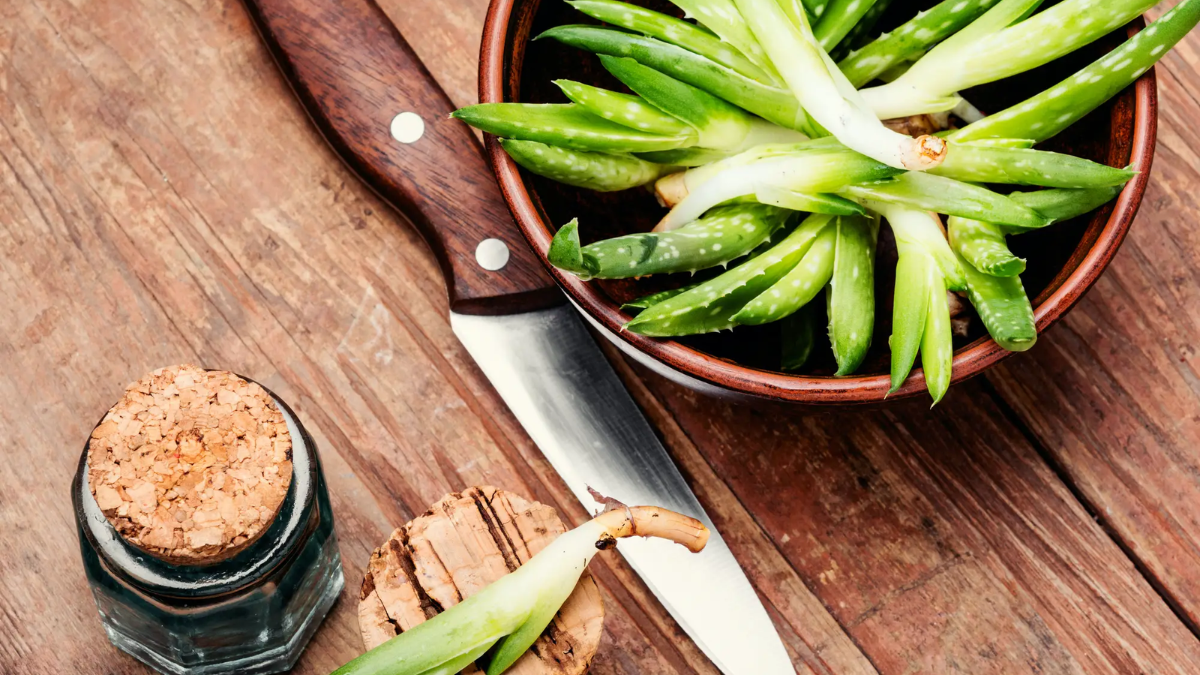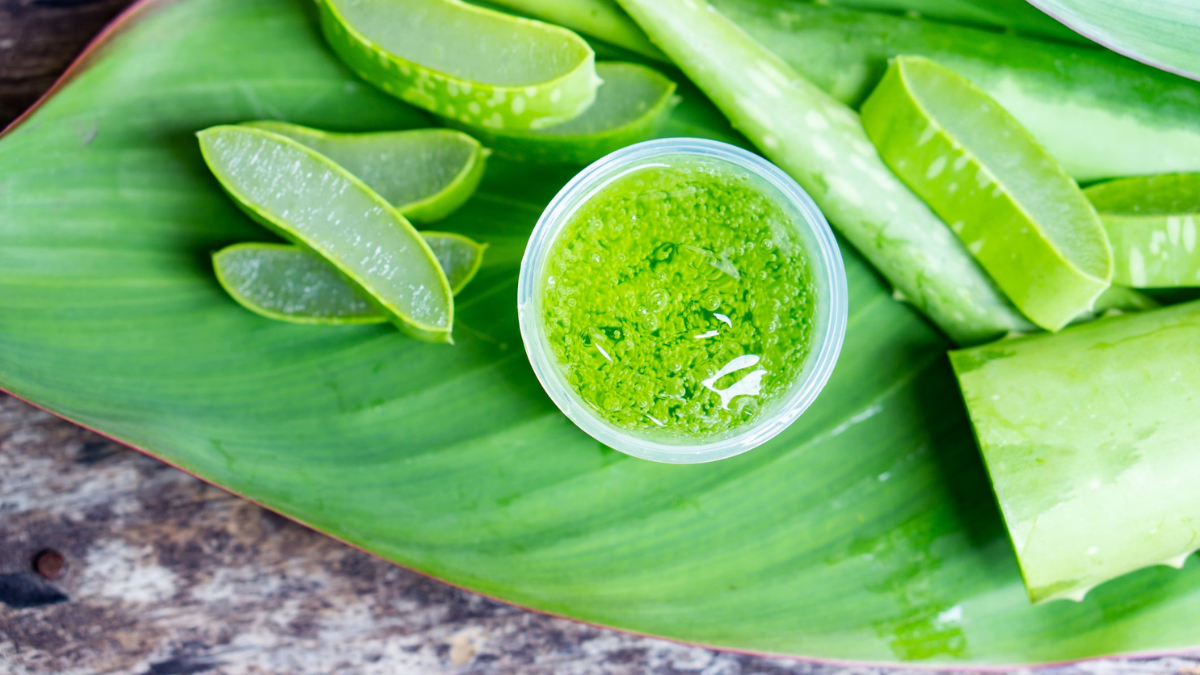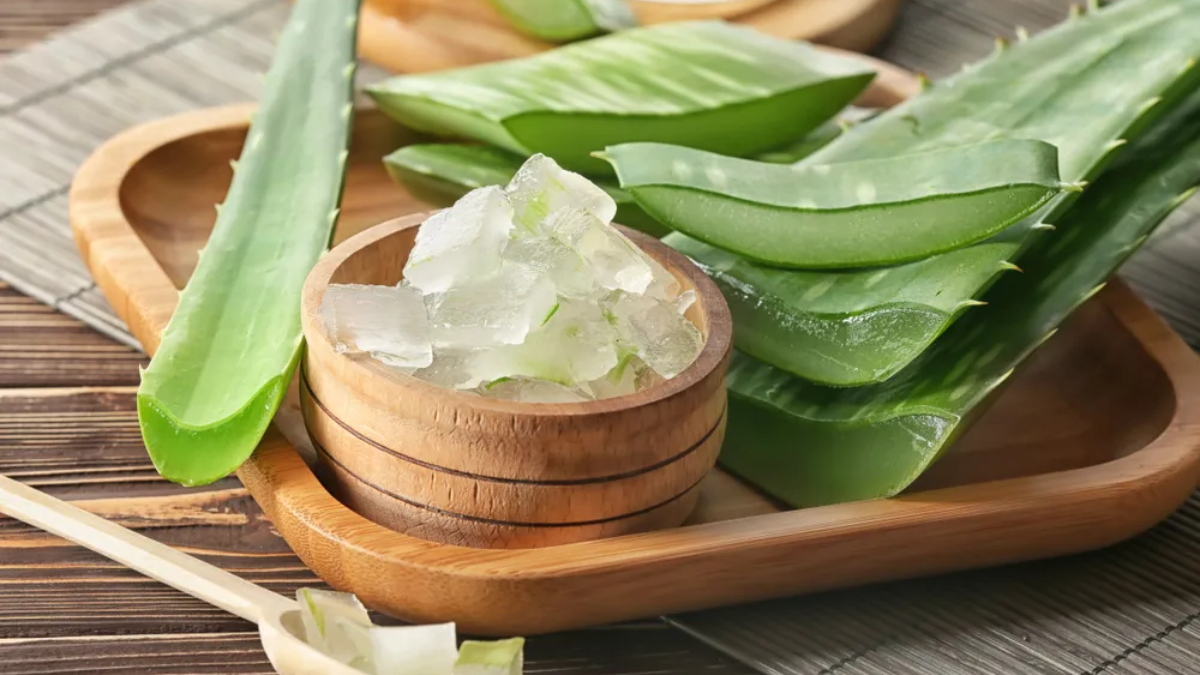The popular medical plant aloe vera has been around for a very long time. Although it is well known for treating skin injuries, it also offers additional health advantages. The thick foliage of aloe vera plants is covered in a gel-like material. After being applied to the skin, it has a cooling and calming effect. It is employed to heal burns and skin wounds. Because of its therapeutic benefits, it has been utilized for millennia. In addition to benefits for the skin, it helps to maintain healthy hair and a scalp. To condition and enhance damaged and dry hair, massage aloe vera into the scalp in addition to the hair.
The aloe plant may have some intriguing health-improving capabilities. In addition to using aloe vera on the skin as a cream or lotion, people sometimes consume the juice and even include the gel in dishes. Let’s explore aloe, including where it originates from, how it might benefit your health (and how to use it properly if you desire), and where to buy it.
Aloe Vera Nutrition Facts
What is Aloe Vera?
Aloe has been used traditionally to cure wounds, hair loss, hemorrhoids, and stomach problems. For at least 6,000 years, aloe vera has been appreciated for its therapeutic benefits. According to the National Center for Complementary and Integrative Health, it was once given to Egyptian pharaohs as a burial gift and was regarded as a “plant of immortality” (NCCIH).
According to a chapter in Herbal Medicine: Biomolecular and Clinical Aspects, populations from a variety of geographical regions have used aloe vera over time, including Indians, Chinese, Mexicans, and North Americans as well.
Aloe now has a large industry supporting it. Its juices include cosmetics and personal care items like lotion, soap, shaving cream, and moisturizer. A variety also knows it by other names, including “burn plant,” “lily of the desert,” and “elephant’s gall.”
The bright green gel typically found on pharmacy shelves is the aloe vera product that most people first consider. You’ve most likely used it to treat a painful sunburn. Aloe vera is also offered as a supplement, which is said to provide the same advantages for the skin and digestive system as other plant-based remedies.
What Types of Aloe Vera do People Use?
Aloe Leaf
The leaves contain a transparent gel that is collected from the plant and often utilized as follows:
- As a topical gel on the skin to treat burns and various skin conditions
- In liquid or capsule form to be taken orally
Aloe-based beverages like aloe vera juice, prepared by simply removing the aloe vera gel off the leaves and combining it with water, are the newest aloe vera trends, according to the Cleveland Clinic. Aloe vera can have a bitter taste when consumed on its own. Thus, several manufacturers flavor or sweeten their bottles. Check the bottle’s ingredients to be sure there isn’t a ton of extra sugar.
Aloe Latex
The yellow pulp lies immediately under the leaf’s outer layer. Aloe latex has been demonstrated to have laxative qualities and is typically given orally to treat constipation.
What are the Health Benefits of Aloe Vera?
Here are the health benefits of aloe vera:
It has Beneficial Plant Components in it
Aloe vera is widely used in the cosmetic, pharmaceutical, and food industries and has an estimated annual market value of $13 billion worldwide.
Its most distinctive feature is aloe vera’s thick, pointed, and meaty green leaves, which can reach 12–19 inches (30–50 centimeters). Because each leaf has a slimy membrane that holds water, the leaves are thick.
Consumers associate the ” gel ” with aloe vera products with this water-filled tissue. Most of the plant’s beneficial bioactive ingredients, including vitamins, minerals, amino acids, and antioxidants, are present in the gel.
It has Antibacterial and Antioxidant Qualities
The health of a person depends on antioxidants. Aloe vera gel includes potent antioxidants from a wide family of compounds known as polyphenols. These polyphenols, along with several other substances in aloe vera, aid in preventing the development of specific bacteria that can result in diseases in people. Aloe vera’s antibacterial, antiviral, and antiseptic qualities are well documented. Because of this, it might aid in wound healing and the treatment of skin conditions.
It Accelerates Wound Healing
Aloe vera is most frequently used topically on the skin as a medicine instead of being consumed. In reality, it has a long history of usage in the treatment of burns, especially sunburn.
Aloe vera formulations are listed as a skin protectant in the United States Pharmacopeia as early as 1810–1820.
According to studies, it is a successful topical burn treatment for first- and second-degree burns. For instance, a review of experimental research revealed that using aloe vera instead of traditional medicine could cut the time it took for burns to recover by about nine days. It also assisted in avoiding infections, itching, and redness. Although there is conflicting information regarding the ability of aloe vera to treat various kinds of wounds, the research is encouraging.
It Reduces Dental Plaque
Health issues like gum disease and tooth decay are fairly prevalent. Reducing the amount of plaque or bacterial biofilms that form on the teeth is one of the best strategies to stop the development of these disorders. Researchers compared chlorhexidine, a common ingredient in mouthwash, with 100% pure aloe vera juice in a mouthwash study involving 300 healthy individuals.
The aloe vera mouthwash appeared to be equally effective as chlorhexidine at removing tooth plaque after four days of use. Similar advantages of aloe vera mouthwash over a 15- to 30-day period were discovered in another investigation. Aloe vera successfully eliminates the yeast Candida albicans and the plaque-forming bacteria Streptococcus mutans from the mouth.
It Helps Treat Canker Sores
Canker sores, also known as mouth ulcers, are common daily. These typically develop inside the mouth, beneath the lip, and last for about a week. According to studies, aloe vera therapy can hasten the healing of mouth ulcers. For instance, using an aloe vera patch on the area proved successful in lowering the size of the ulcers in a 7-day study of 180 persons with recurring mouth ulcers. However, it was not more effective than corticosteroids, the standard treatment for ulcers. In a different study, aloe vera gel not only hastened the healing of mouth ulcers but also lessened their pain.
It Reduces Constipation
Constipation may also be treated with aloe vera. This time, the advantages are brought about by the latex rather than the gel. Just beneath the leaf’s surface, a sticky, yellow residue is known as latex. Aloin, also known as barbaloin, is the main substance that causes this effect and has been known to have laxative properties. People have, however, voiced worries regarding safety with repeated use. Due to this, aloe latex has not been sold as an OTC product in the United States since 2002.
Risks Associated with Eating Aloe Vera
There could be dangers associated with ingesting aloe vera latex, a yellow material inside the leaf.
- By encouraging contractions, ingesting the latex in moderation may help relieve constipation. But due to safety concerns, the US FDA outlawed the sale of over-the-counter medications containing aloe vera latex in 2002.
- Aloe vera latex ingestion over an extended period has been associated with negative side effects such as muscle weakness, irregular heartbeat, and stomach cramps.
- Prolonged use may even be lethal in high quantities above 1 gram daily.
Because ingesting the latex could provoke uterine contractions, resulting in a miscarriage, pregnant women should avoid doing so. - Aloe vera latex should also not be consumed by those with digestive diseases like inflammatory bowel disease (IBD) or Crohn’s disease since it may worsen their conditions.
- Aside from the latex, it is not recommended that anyone using diabetes, heart, or renal medications use aloe vera gel since it could exacerbate potential negative effects.
- Aloe vera skin care gels shouldn’t be consumed because they don’t provide the same advantages as the gel found inside the leaf. Additionally, skincare gels could include substances that shouldn’t be consumed.
Ways to Use Aloe Vera
You could now want to investigate a few of the advantages mentioned above. If you want to try aloe internally, you must collaborate with your main physician, a nutritionist, or a healthcare professional knowledgeable about how to do so safely. Other unexpected applications for the plant have been demonstrated, including the following.
- According to one study, putting aloe vera gel on the outside of tomatoes helped delay ripening, kept the tomatoes’ quality and freshness intact, and stopped some bacteria from spreading.
- Aloe vera mouthwash has been found in studies to minimize plaque buildup on teeth. In the experiment, 300 participants were given the option of rinsing their mouths with aloe vera, regular saline, or chlorhexidine gluconate mouthwash.
- Researchers discovered aloe vera to be equally effective in reducing plaque after four days as chlorhexidine and have no negative side effects. To evaluate longer-term effectiveness and safety, more research is required.
- According to a study, the substance that provides aspirin its anti-inflammatory benefits is salicylic acid, which is naturally present in aloe vera. Aloe vera’s usefulness in treating pain needs to be further investigated. However, a previous article indicated that taking it orally may help lessen chronic pain not caused by cancer, such as osteoarthritis pain.
- While more human trials are required, previous research in mice revealed that a tiny amount of aloe vera given topically might prevent inflammation from moderate irritants.
Conclusion
Aloe vera has a variety of medicinal uses, including skin and gum ointment. Aloe vera gel can be consumed in a container or straight off an aloe plant leaf. Aloe vera gel and juice have varied applications. Aloe vera whole leaf extract that has been decolored should be used in oral choices to reduce risk. Before utilizing items containing aloe to treat a condition, a person should always consult a doctor. Aloe vera is an excellent addition to your diet. Include this superfood in your everyday diet. To benefit from the numerous healing properties of this plant, many people like to grow aloe plants in their backyard gardens.



